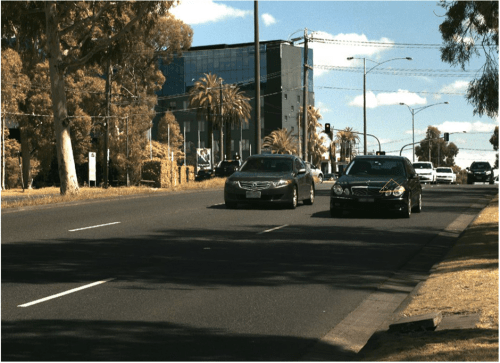To achieve Victoria’s road safety objectives in the most effective manner, enforcement activity must be consistent, meaningful and applied at high-risk times.
Victoria Police is the authority responsible for choosing locations and operating times of mobile digital road safety cameras in Victoria. The highest priority locations are those with a high crash-risk and speed-related problem areas.
A list of approved mobile digital road safety camera locations is published monthly.
Mobile digital road safety cameras can be installed in unmarked vehicles. Although mobile digital road safety cameras are not sign-posted, they are not deliberately hidden.
How mobile digital road safety cameras work
Mobile digital road safety cameras use a radar to determine the speed and the direction of a vehicle. The camera can detect speeding vehicles in 1 or both directions and from either side of the road.
Gatso T-Series Mobile Digital Road Safety Camera
In December 2019, the Victorian Government deployed the Gatso T-Series Mobile Digital Road Safety Camera, which can enforce over 6 lanes of traffic in either direction and can detect multiple vehicles simultaneously. The Gatso T-Series Mobile Digital Road Safety Camera is operated as a rear facing camera, installed in the back of the camera car to accommodate the various components and associated equipment.
If a vehicle is speeding, it will trigger the camera and create an image of the speed detection. A Target Vehicle Marker is generated automatically by the camera system to identify the speeding vehicle and appears on the image as a yellow triangle.
If there are multiple vehicles in a fine image, the offending vehicle is identified with the yellow triangle. Vehicles that are not speeding will not be marked in the image.
Section 83A Road Safety Act 1986 certificates produced from Gatso T-Series Mobile Digital Road Safety Cameras contain the vehicle marker in the image.
Accuracy of mobile digital road safety cameras
Prior to setup and at the end of each mobile digital road safety camera session, the specially trained operator conducts a full inspection of the site (including speed zone and site boundary confirmation) and test shots are taken to ensure the system is working correctly.
For more information about camera accuracy and the process before a fine is issued, see speed verification.
Operating guidelines
To maintain community confidence in the mobile digital road safety camera program, it is important for the operational use of mobile digital road safety cameras to be fair and reasonable.
The Victoria Police Traffic Camera Office provides guidelines around the operation of the Gatso T-Series Mobile Diital Road Safety Camera through the manual below.
The guidelines specify that:
- While using a mobile digital road safety camera, the operator can park the vehicle on a footpath, a nature strip, a dividing strip or a timed parking zone.
- There are no technical or legal restrictions on placing a mobile digital road safety camera on a slope, gradient or hill.
Updated

